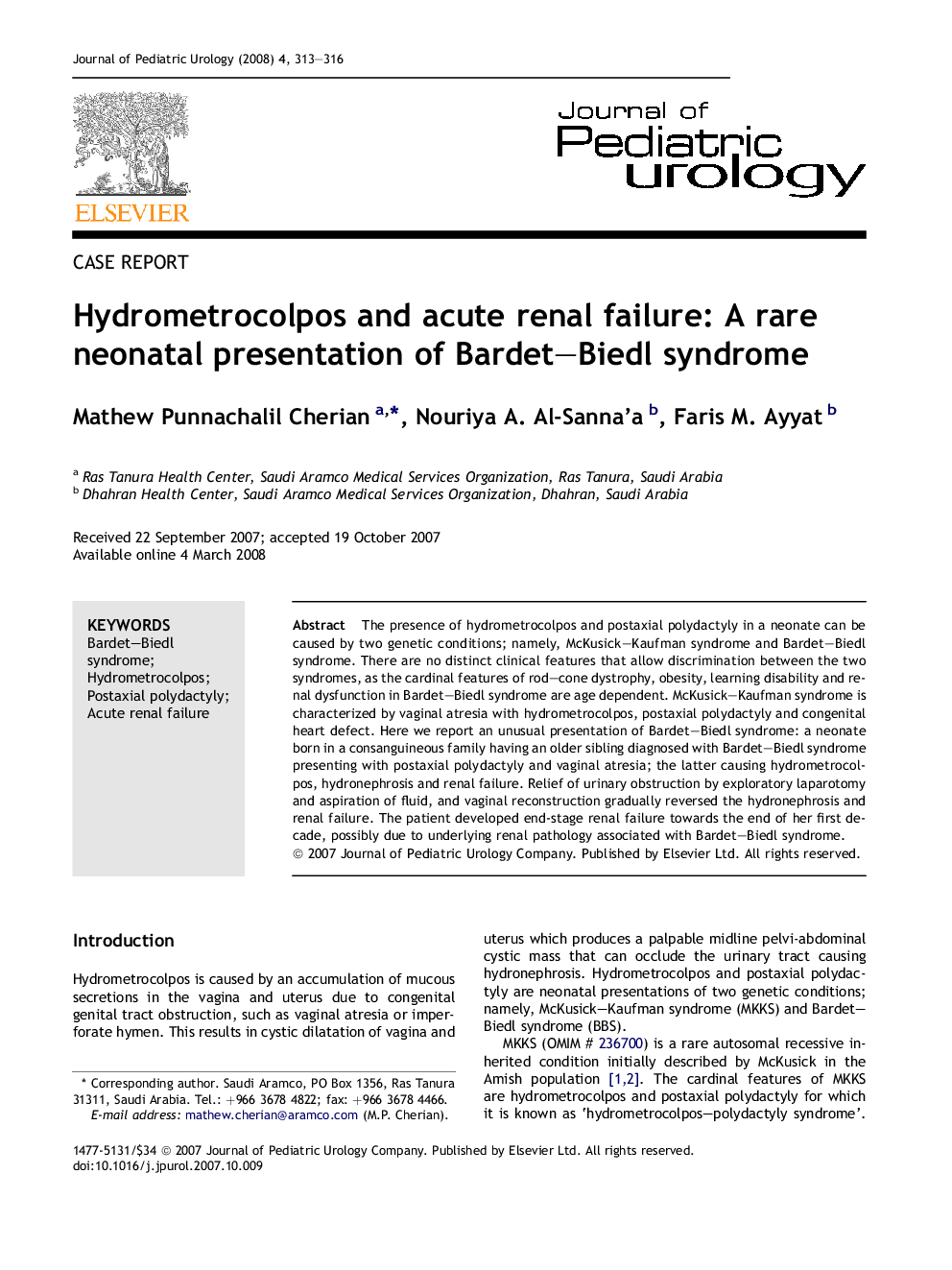| Article ID | Journal | Published Year | Pages | File Type |
|---|---|---|---|---|
| 4163414 | Journal of Pediatric Urology | 2008 | 4 Pages |
The presence of hydrometrocolpos and postaxial polydactyly in a neonate can be caused by two genetic conditions; namely, McKusick–Kaufman syndrome and Bardet–Biedl syndrome. There are no distinct clinical features that allow discrimination between the two syndromes, as the cardinal features of rod–cone dystrophy, obesity, learning disability and renal dysfunction in Bardet–Biedl syndrome are age dependent. McKusick–Kaufman syndrome is characterized by vaginal atresia with hydrometrocolpos, postaxial polydactyly and congenital heart defect. Here we report an unusual presentation of Bardet–Biedl syndrome: a neonate born in a consanguineous family having an older sibling diagnosed with Bardet–Biedl syndrome presenting with postaxial polydactyly and vaginal atresia; the latter causing hydrometrocolpos, hydronephrosis and renal failure. Relief of urinary obstruction by exploratory laparotomy and aspiration of fluid, and vaginal reconstruction gradually reversed the hydronephrosis and renal failure. The patient developed end-stage renal failure towards the end of her first decade, possibly due to underlying renal pathology associated with Bardet–Biedl syndrome.
